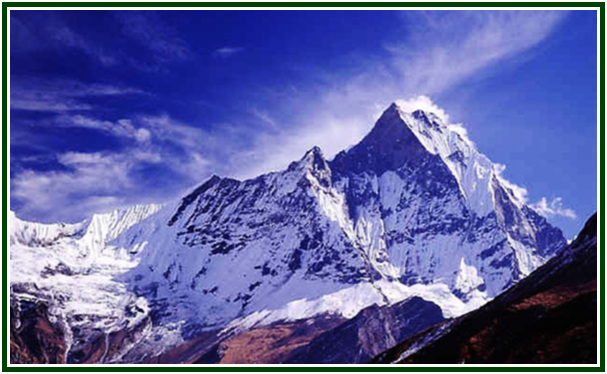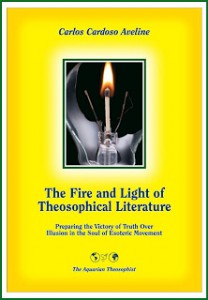
A Short Text Clarifying Fundamental Questions
Helena P. Blavatsky

00000000000000000000000000000000000000000000
A 2011 Editorial Note:
The following text was first published at “The
Theosophist”, in India, in July 1884. It is here
reproduced from “Theosophical Articles”, H. P.
Blavatsky, Theosophy Co., Los Angeles, 1981, vol. I,
pp. 293-294. We have added three footnotes. In order
to make it easier to read and to think about, we also
divided this one-paragraph text in various small paragraphs.
(Carlos Cardoso Aveline)
00000000000000000000000000000000000000000000000000000000
A MAHATMA is a personage, who, by special training and education, has evolved those higher faculties and has attained that spiritual knowledge, which ordinary humanity will acquire after passing through numberless series of reincarnations during the process of cosmic evolution, provided, of course, that they do not go, in the meanwhile, against the purposes of Nature and thus bring on their own annihilation.
This process of the self-evolution of the MAHATMA extends over a number of “incarnations” although, comparatively speaking, they are very few. Now, what is it that incarnates?
The occult doctrine, so far as it is given out, shows that the first three principles [1] die more or less with what is called the physical death. The fourth principle, together with the lower portions of the fifth, in which reside the animal propensities, has Kama Loka for its abode, where it suffers the throes of disintegration in proportion to the intensity of those lower desires; while it is the higher Manas, the pure man, which is associated with the sixth and the seventh principles [2], that goes into Devachan to enjoy there the effects of its good Karma, and then to be reincarnated as a higher individuality.
Now, an entity, that is passing through the occult training in its successive births, gradually has less and less (in each incarnation) of that lower Manas until there arrives a time when its whole Manas, being of an entirely elevated character, is centered in the higher individuality, when such a person may be said to have become a MAHATMA.
At the time of his physical death, all the lower four principles perish without any suffering, for these are, in fact, to him like a piece of wearing apparel which he puts on and off at will.
The real MAHATMA is then not his physical body but that higher Manas which is inseparably linked to the Atma and its vehicle (the sixth principle) – a union effected by him in a comparatively very short period by passing through the process of self-evolution laid down by the Occult Philosophy. When, therefore, people express a desire to “see a MAHATMA”, they really do not seem to understand what it is they ask for. How can they, by their physical eyes, hope to see that which transcends that sight? Is it the body – a mere shell or mask – they crave or hunt after? And supposing they see the body of a MAHATMA, how can they know that behind that mask is concealed an exalted entity?
By what standard are they to judge whether the Maya before them reflects the image of a true MAHATMA or not? And who will say that the physical is not a Maya?
Higher things can be perceived only by a sense pertaining to those higher things. And whoever therefore wants to see the real MAHATMA, must use his intellectual sight. He must so elevate his Manas that its perception will be clear and all mists created by Maya must be dispelled. His vision will then be bright and he will see the MAHATMAS wherever he may be, for, being merged into the sixth and the seventh principles, which are ubiquitous and omnipresent, the MAHATMAS may be said to be everywhere. But, at the same time, just as we may be standing on a mountain top and have within our sight the whole plain, and yet not be cognisant of any particular tree or spot, because from that elevated position all below is nearly identical, and as our attention may be drawn to something which may be dissimilar to its surroundings – so in the same manner, although the whole of humanity is within the mental vision of the MAHATMAS, they cannot be expected to take special note of every human being, unless that being by his special acts draws their particular attention to himself. The highest interest of humanity, as a whole, is their special concern, for they have identified themselves with that Universal Soul which runs through Humanity, and he, who would draw their attention, must do so through that Soul which pervades everywhere.
This perception of the Manas may be called “faith” which should not be confounded with blind belief. “Blind faith” is an expression sometimes used to indicate belief without perception or understanding; while the true perception of the Manas is that enlightened belief, which is the real meaning of the word “faith”. This belief should at the same time be accompanied by knowledge, i.e., experience, for “true knowledge brings with it faith.”
Faith is the perception of the Manas (the fifth principle), while knowledge, in the true sense of the term, is the capacity of the Intellect, i.e., it is spiritual perception.
In short, the higher individuality of man, composed of his higher Manas, the sixth and the seventh principles, should work as a unity, and then only can it obtain “divine wisdom”, for divine things can be sensed only by divine faculties. Thus the desire, which should prompt one to apply for chelaship [3], is to so far understand the operations of the Law of Cosmic Evolution as will enable him to work in harmonious accord with Nature, instead of going against its purposes through ignorance.
NOTES:
[1] The first three principles of the seven principles of human consciousness. These three are: 1) Sthula Sharira, or physical body; 2) Prana, or vitality; and 3) Linga Sharira, the “double” of the physical body, the subtle structure which organizes and sustains Prana or vitality during physical life. The fourth principle is Kama, the seat of animal desires and fears. Fifth principle is Manas, the Mind. (CCA)
[2] Sixth and seventh principles: Buddhi, the spiritual immortal soul; and Atma, the divine spark, the higher self, the universal impersonal principle. (CCA)
[3] Chelaship – discipleship. (CCA)
000
On the role of the esoteric movement in the ethical awakening of mankind during the 21st century, see the book “The Fire and Light of Theosophical Literature”, by Carlos Cardoso Aveline.

Published in 2013 by The Aquarian Theosophist, the volume has 255 pages and can be obtained through Amazon Books.
000